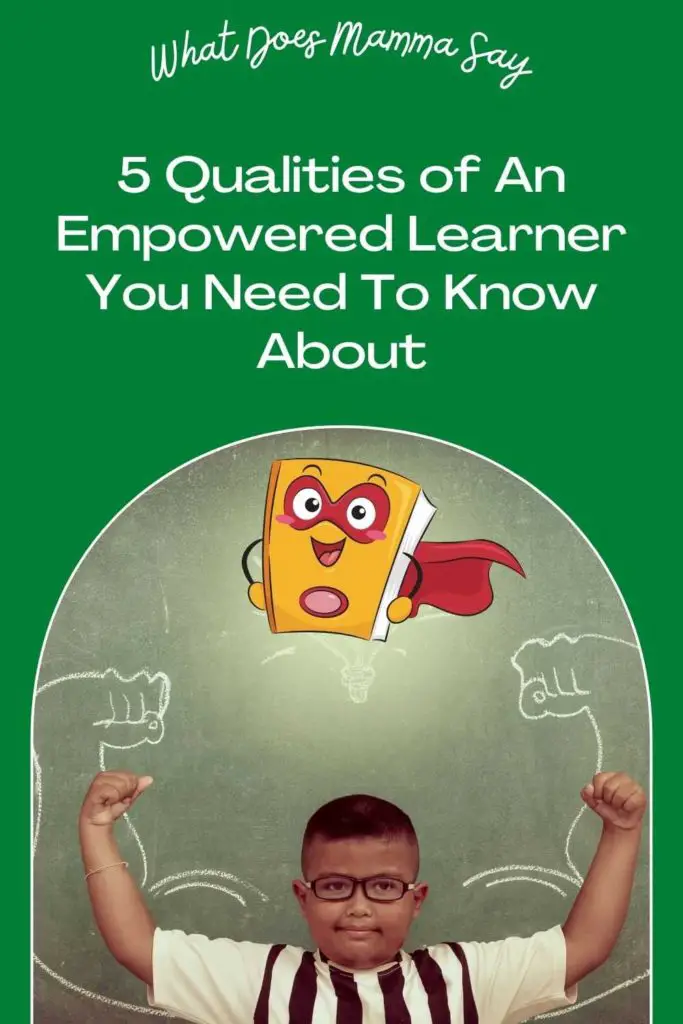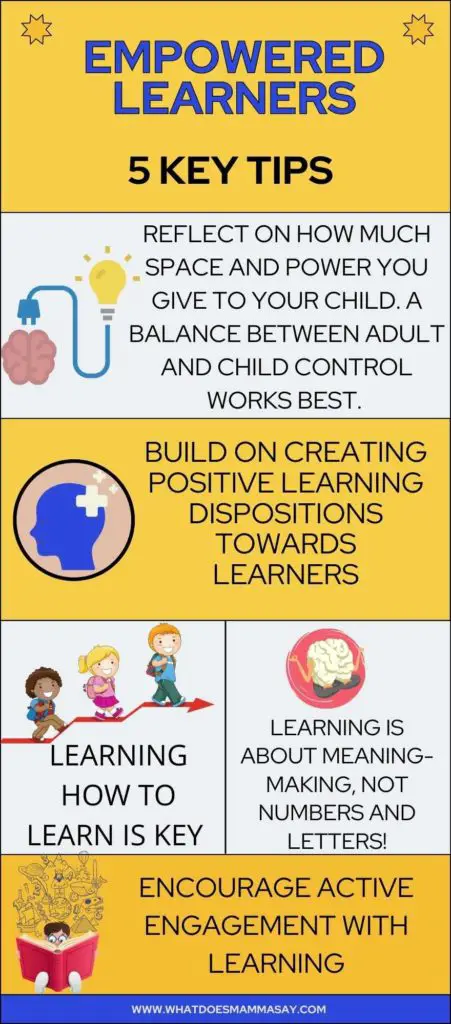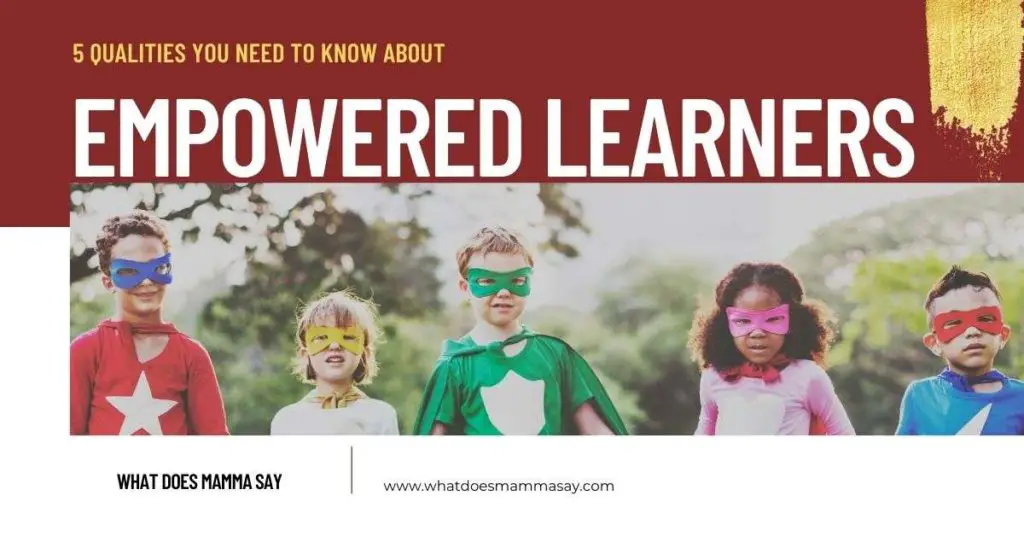With more and more celebrities getting involved in promoting the need for education for ALL, it is no wonder that efforts to support learners have increased. Rihanna, Beyonce, Nicki Minaj, Taylor Swift, Justin Bieber are only some of the big names that promote education around the world. But we are still far from painting a pretty picture!
In 2018, more than 120 million girls around the world were out of school. 100 million youth around the world lack basic literacy skills. And girls represent two thirds of the world’s illiterate.
Fighting for education helps, but we are not even close to where we should be!
There is hope however! Even in the harshest of conditions, some children manage to succeed against the odds! ‘At risk’ children can change trajectory when helped to become empowered learners!
To help children in their learning journey, it is vital we learn about the characteristics of a learner. Once we learn about these, we discover the qualities of an empowered learner!
So which are the steps to empowering the learner?
These are the 5 important tips to help you understand the characteristics of a learner and guide them to become empowered learners:
1. how you see the child as a learner influences your every interaction so make sure to reflect on how much space you offer learners
2. children need to be supported to build positive learning dispositions
3. learning is not about numbers and letters, but about meaning-making
4. learning how to learn is the key to an empowered learner
5. engagement with learning is vital so focus on ways to encourage active involvement
What is an empowered learner anyways?
So, what are empowered learners? Isn’t empowered the same as motivated?
Not exactly.

On the motivation continuum, empowerment could be at best similar to intrinsic motivation, in terms of self-determination and taking enjoyment in learning.
But an empowered learner is more than that! As you might have guessed, to empower means to give power to. But power has many meanings. It can refer to authority, so empowered learning refers to authorization. Power can also describe capacity, energy.
So empowering learners can refer to the different forms in which teachers and parents give learners opportunities to increase confidence, to learn and practice skills, to exert control, to influence decisions. It ultimately refers to supporting learners to gain the skills that allows them to critically understand the world around them, not just receive it as it is. To become independent problem solvers and to have the power to make decisions.
Sounds commonsensical, doesn’t it?
Empowering learners means to allow students to act as grown ups. We have the power to decide for ourselves and to think for ourselves, to make decision and solve problems. Students do not! Not all schools have this vision of supporting learners to become independent grown ups!
Empowering learners is not about taking away power from teachers or parents, it is about about creating a relationship of collaboration based on mutual respect and equity.
So let us look at how such a relationship can be achieved!
How to create a relationship that helps children become empowered learners
There are many books that urge for the need to create such a relationship in schools, such as Engaging, Motivating and Empowering Learners in Schools, Empowering learners guidelines for school library programmes, Empowering teachers and learners through technology and so many many more. But they all talk about how you empower and motivate learners in schools.
Because this started to become a new vision for schools, I think it is essential for parents too to know how to start this process early on, even before the child starts school. So that they can give children the best start in life and in adjusting to school life.
So, parents, this is for you. Read through the steps below and pause from time to time to reflect. Do I do this with my child? Could I do it? Does it work for me?
If you don’t believe in one step, don’t shy away. Keep reading, maybe another step sounds more appropriate for you.
Let’s begin:
1. How you interact with the child learner speaks volumes
The very first question we were asked during my master’s programme is the same question I will ask you now: How do you see the child learner? What is your image of a child? Think about it and describe what you see in a few adjectives.
Do you see children as innocent and in need of protection? Or as a person yet to grow? Do you imagine a helpless child who knows nothing about the world surrounding him/her and needs to be filled with knowledge?
There is no right or wrong answer here!

But this image you hold of the child learner will guide your very approach to how you interact with a child on any level!
When we see children as helpless and in need of protection, we tend to overpower them, giving little space for independent decision and for their voice to form.
If we see them as a person in the making, we focus on who they will become, and all our energy will go towards helping them get there. Rather than helping them just be, now, in the present, and not the future!
We were asked to imagine a powerful and competent child learner, able to voice his own choices, interests and concerns. A child with his/her own rights and ideas, who deserves to be listened to! Truly listened to! From the very first days! By listening I also mean observing, documenting even, his/her play, gestures and intentions.
How would you relate to such a child learner? How much voice and space would you give him/her?
Use pictures and videos or your interaction with your child and when alone, reflect on those. Take note of how much time you spend talking, organizing, giving intructions, imposing limits etc. Then take a note of your child doing this. And compare. If there is a balance between the two, then you are doing great in supporting for child to become an empowered learner.
2. Help children build positive learning dispositions
Children are born with the disposition to make sense of their experiences. Our jobs as adults is to make sure that we don’t damage that disposition.
What do I mean by that?
All people develop a certain tendency or a pattern of behaviour that is shaped by the interactions we have with the ones around us, including our environment. For example, little children’s interactions with nannies or grannies, parents, teachers, will create certain dispositions towards learning and achieving a goal.
These can be positive or negative attitudes towards learning, that will guide them throughout life.
The good news is that these learning dispositions constantly change! They change as a result of each new opportunity offered to the child.
In other words, make the most of your interactions with the child and offer plenty of positive opportunities to empower the learner!
But how can you encourage positive learning dispositions?
- Offer praise for trying something out and encourage children to try again.
- Congratulate the achievement, not the child, as this will lead to a growth mindset rather than a fixed one which can prevent children from thinking they can do better.
- Choose activities that are challenging, but not too difficult, something that could lead the child to reaching just above their actual potential. (eg. Once the child can count to ten and easily recognize the numbers, introduce numbers from 11 to 20; when can easily recognize all the letters, start spelling two and three letter words etc)
- Do not stigmatize mistakes or offer feedback related to the person. Feedback is always given on the task, NOT the person. (‘I think this was a good start, maybe try again and think about how you can do it differently’ rather than ‘You couldn’t do it/ You’re wrong’.
3. Understand that learning is all about meaning making
Over the past century, learning has been identified as acquiring facts, skills and knowledge, but also as individual construction of meaning through discussion and open-ended learning. More recently however, learning has been described as co-construction of meaning.
What does this mean?
Co-construction refers to the fact that we cannot learn in isolation, but with others, through our constant interactions. This perspective opens up a whole new world. One in which both teachers (any adult or more knowledgeable other can be a teacher) and learners work together to make sense of the world. It talks about all the different ways in which children can learn.
Not a perfect way, but an individual and unique way!

It describes a world of collaboration, rather than competition, of appreciating each child and valuing his/her input into the world. It relates very closely to the image of the capable and unique child I mentioned above.
So, when you imagine learning as co-construction, think about these different things:
- Children can teach you as many things as you can teach them, so offer them the chance to do so.
- Listen, observe and ask open-ended questions so that you can understand what they feel, like and think.
- Consider speaking less in interactions with children. When we speak, we impose a certain way of looking at the world and the things around us.
- Balance the time you direct and guide activities with opportunities for child-led activities. Let the child guide you and follow his/her lead.
- Respect the idea that we are navigating unfamiliar worlds and we should explore multiple views of the world. Make sure children are aware of this! This also implies that it is ok not to know something, and that different people have different ways of looking at the same thing.
- Effective learning can be promoted through active involvement.
- Adopting not only hands-on learning activities that are so popular nowadays, but also giving children an active role in their learning: opportunities to choose, to use their voice, to have power of decision, to exert their right to silence, to bring their own interests and ideas into learning.
Co-constructing and making sense of the world rather than filling children with information evolves around the ‘ethics of everybody’ – of unity, not sameness, of democratic participation, community spirit and shared responsibility for learning.
4. Learning how to learn is a key factor for empowered learners
We live in the so-called information explosion period. Therefore, trying to keep up with all the new facts might prove to be futile. In a world of constant new information, learners need to know more than ever before how to find and select relevant information, process it and connect it to their world. Learning how to learn proves to be essential in such a process of supporting empowered learners.
Nowadays, educational research focuses intensively on self-regulated learning skills.
What are self-regulated skills and why are they important?
Self-regulation refers to the learners’ process of control during tasks. It predicts educational outcomes and the ability to become a well-adjusted social being. Self-regulated skills encourage independence and autonomous learning and are strongly connected to learners’ motivation.
Self-regulation refers to the skills and will a learner proves to have in order to help him decrease the gap between what he/she can do and what he/she is asked to do! In other words, a self-regulated child is an independent learner.

An independent learner is able to show many of the abilities below:
- The ability to control your thoughts and actions in order to achieve a goal
- The ability to resist distractions
- Persisting with a task
- Attend to key features of the environment and act upon them
- Choosing and using effective strategies
- Being aware of personal characteristics
- Interpreting, planning, monitoring and adjusting during tasks
Becoming self-regulated can help learners build positive beliefs that fuel their engagement with learning. It could also support children navigate emotion and motivation by becoming in control of their own learning, essential characteristics of an empowered learner.
Research shows that children as young as three are able to engage with a wide range of self-regulatory behaviours. However, the extent to which these skills are acquired varies according to the opportunities children received.
Self-regulation skills are taught, so explicitly tell children how to plan, observe, monitor, evaluate their learning, recognize their strengths and limitations, organize themselves and check their understanding. Even with three-year-olds! Talking is the best tool in promoting such skills!
5. Creating engagement with learning is vital
Learning is active and creative, not necessarily a receptive process. It is continuously developed and demands learner agency. Meaning?
Learner agency is crucial to learning in the form of meaning-making and knowledge construction, competence development etc. In other words, there is no learning without learners and these two concepts cannot be separated.
Learners are central in the learning process but keeping them engaged is the trickiest part of all! So engaging the learner is essential!
So how do you keep learners engaged?
Play and playfulness can be seen as integral to the ways in which humans learn, relate and interact across generation and cultures. So, keep this in mind when trying to keep children engaged with learning. Please do not imagine playing games all day, but rather adopting elements of playfulness in various forms.

We play or show playfulness when we:
- Joke, as this is a form of playful thought
- Engage with ‘what if’ and ‘as if’ thinking and activities
- Pretend and invent
- Create a bridge between reality and fantasy, the actual and the possible
- Investigate, challenge, try out new things
- Watch films/make something/listen to music/practice a hobby
Apart from the integration of a playful element in teaching, to support empowered learners we should consider any of the approaches below, all of which were proven to create the proper conditions for brain growth and efficient engagement with learning:
-positive emotional support
-secure learning environments and a feeling of belonging
-positive social interactions
-sensory stimulation
-language-rich environments
-plenty of interactions
-encountering novel challenges and problems
-active engagement with materials, resources, and people
-hands-on and brains-on activities
Educational apps can also help engage the child with learning in ways which are stimulating and active.
In Conclusion
Learning is a permanent relation with all that surrounds us, it is a web of human interactions and constant development. In such an environment, focus on creating a relationship that supports an empowered learner. An independent learner!
Children learn best when their opinions are taken into consideration, when their voice is given time and space to form. And especially when they engage actively with learning and are given opportunities for positive interactions.
As adults, try to find a balance between your control and your child’s agency and power, and create a relationship that encourages children to become capable, active, agentic and strong human beings! That is how they become empowered learners!
Start building relationships that lead to ‘a pedagogy’ of shared learning and teaching!
Sources
Play and Learning in The Early Years: From Research to Practice- P. Broadhead, J. Howard & E. Wood, 2010
Rethinking Play and Pedagogy in Early Childhood Education – S. Rogers, 2011
Play, Learning and the Early Childhood Curriculum- E. Wood, 2005
What Is Effective Learning in Classrooms? – C. Watkins, E. Carnell & C. Lodge, 2007
What Are the Foundations for Effective Teaching and Learning? – A. Pollard, 2014
Becoming a Self-regulated Learner – B.J. Zimmerman, 2002

Hi. I am Monica, an experienced ESL teacher and early years student, mother to a preschooler and passionate reader.


These are really great tips! I am wondering, do you lean towards a Montessori approach with younger kids? Allowing them freedom to learn at their pace and have power over deciding what to do next?
Thank you, Melissa. The answer is a bit complex, personally speaking, I think that any approach that allows children this opportunity and values them as human beings with rights and opinions, takes them into consideration and engages in dialogue with the child is a pedagogy that educational research finds positive, regardless of the method used, be it Montessori, Waldorf, Anji Play, Reggio, you name it.
With my kiddo getting older, these are great tips to keep in mind! I especially like the section on learning how to learn. Self regulation is such an important skill!
I agree, Rachel, self-regulation truly helps children become good learners as well.